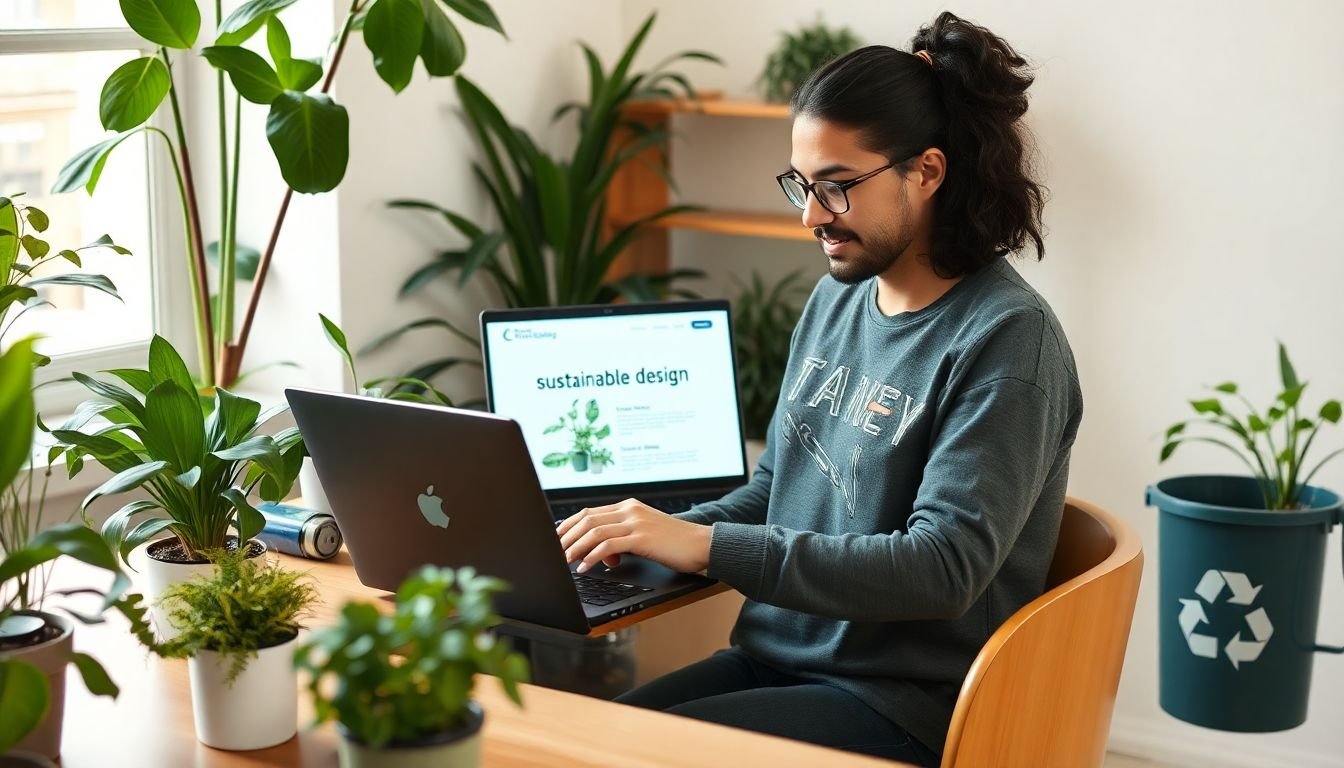
Table of Contents
Have you ever stopped to think about the environmental impact of your design work? As graphic designers, we’re part of an industry that, while creatively vibrant, also contributes significantly to waste and carbon emissions. But what if we told you that you could make a tangible difference, one design at a time? Welcome to the world of sustainable graphic design, where eco-friendly practices meet aesthetics, and every choice counts. Let’s dive in and explore how we can all play our part in creating a greener future, one pixel at a time.
In today’s fast-paced, digital age, it’s easy to overlook the environmental cost of our work. According to a study by the Environmental Paper Network, the paper and print industry contributes to around 25% of total global wood harvest and 15% of total greenhouse gas emissions. But it’s not all doom and gloom. As designers, we have the power to change this narrative. By adopting sustainable design principles, we can reduce our carbon footprint, promote responsible consumption, and even enhance our work’s impact.
So, what exactly is sustainable graphic design? At its core, it’s about making conscious choices throughout the design process that minimize environmental impact without compromising creativity or quality. It’s about asking questions like: Can we reduce paper usage by going digital? How can we source materials responsibly? How can we ensure our work is accessible and durable? It’s about understanding that every decision we make, from the initial concept to the final output, has an impact.
In this article, we promise to demystify sustainable graphic design, providing you with practical tips, real-world examples, and actionable steps to help you integrate eco-friendly practices into your workflow. Whether you’re a seasoned designer looking to green your studio or a student eager to learn about sustainable design principles, this guide is for you. By the end of this article, you’ll have a clear understanding of how to create visually stunning, responsible, and sustainable graphic design. So, are you ready to roll up your sleeves and make a difference, one design at a time?
Eco-Friendly Practices for a Greener Design Industry
In the dynamic world of design, where creativity and innovation are the lifeblood, it’s high time we infuse another vital element: sustainability. The design industry, with its vast reach and influence, holds a significant responsibility in shaping a greener future. Eco-friendly practices are no longer a niche concern but a necessity that can transform the industry’s impact on the environment. From the initial concept to the final product, every stage offers opportunities for greener choices. This could mean opting for recycled materials, reducing waste through efficient design, or embracing digital platforms to minimize paper usage. Moreover, sustainable practices can extend to the workplace, with energy-efficient lighting, water-saving measures, and even plant-filled offices that improve air quality. By adopting these practices, the design industry can not only contribute to environmental conservation but also inspire clients and consumers to embrace sustainability. After all, a greener design industry is not just about doing our part; it’s about creating a better, more sustainable future for all.
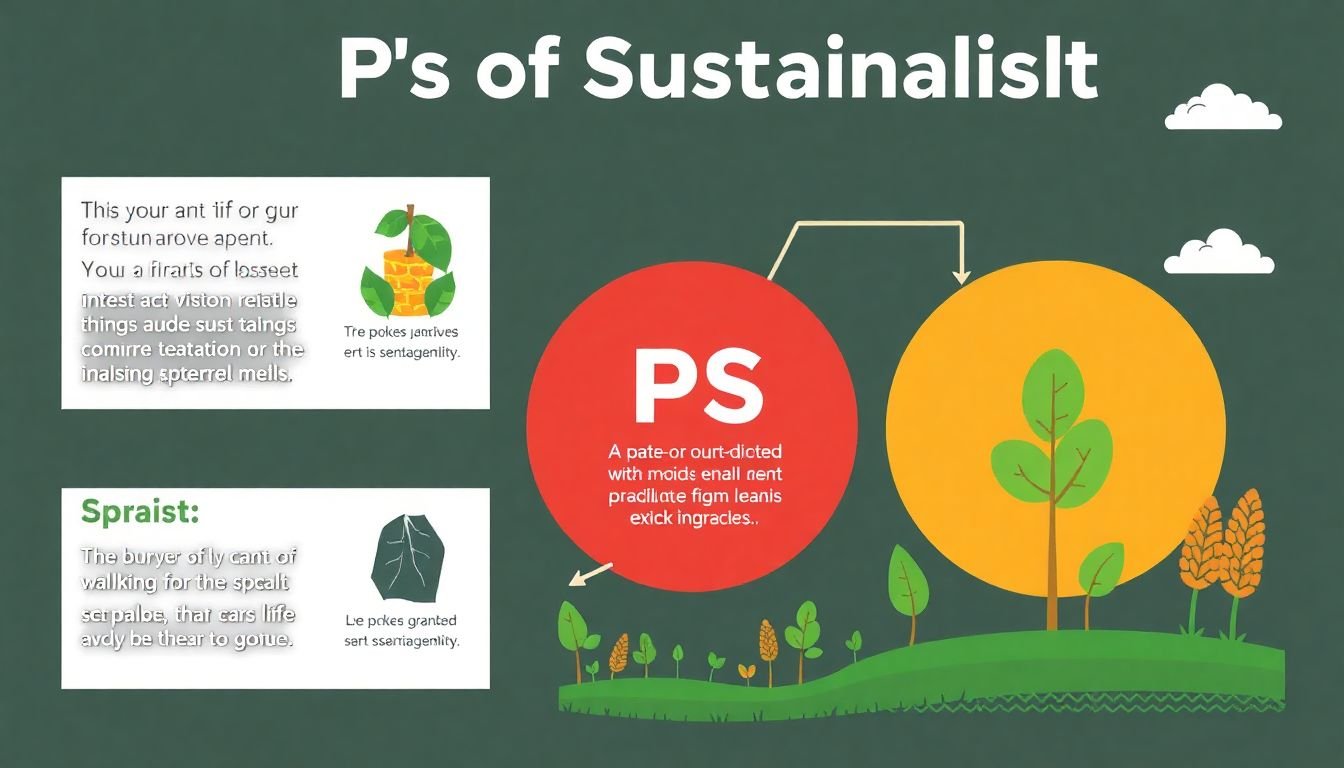
Understanding Sustainable Design
Sustainable design, in the context of graphic design, is an approach that seeks to minimize environmental impact and promote social responsibility while creating visually compelling and functional designs. It’s a holistic approach that considers the entire lifecycle of a product or project, from inception to disposal or recycling.
The importance of sustainable design in graphic design cannot be overstated. As designers, we have a responsibility to consider the impact of our work on the environment and society. By embracing sustainable design principles, we can help reduce waste, conserve resources, and promote a more sustainable future.
At the heart of sustainable design are the three Ps: People, Planet, and Profit. Let’s break these down:
- People: This refers to the social and ethical aspects of design. It’s about creating designs that are accessible, inclusive, and beneficial to all users, regardless of their abilities, backgrounds, or circumstances. It also involves considering the working conditions and rights of those involved in the production and distribution of our designs.
- Planet: This is about minimizing the environmental impact of our designs. It involves considering the materials used, the energy consumed in production, and the waste generated at the end of a product’s life. It also involves promoting recycling, upcycling, and the use of renewable resources.
- Profit: This is about ensuring that sustainable design is economically viable. It’s about demonstrating that sustainability is not just good for the planet, but also good for business. It involves finding innovative ways to reduce costs, improve efficiency, and create new revenue streams through sustainable design.
In essence, sustainable design is not just about creating ‘green’ designs, but about creating designs that are socially responsible, environmentally friendly, and economically viable. It’s about designing for the long term, not just the short term. It’s about creating a better future, one design at a time.
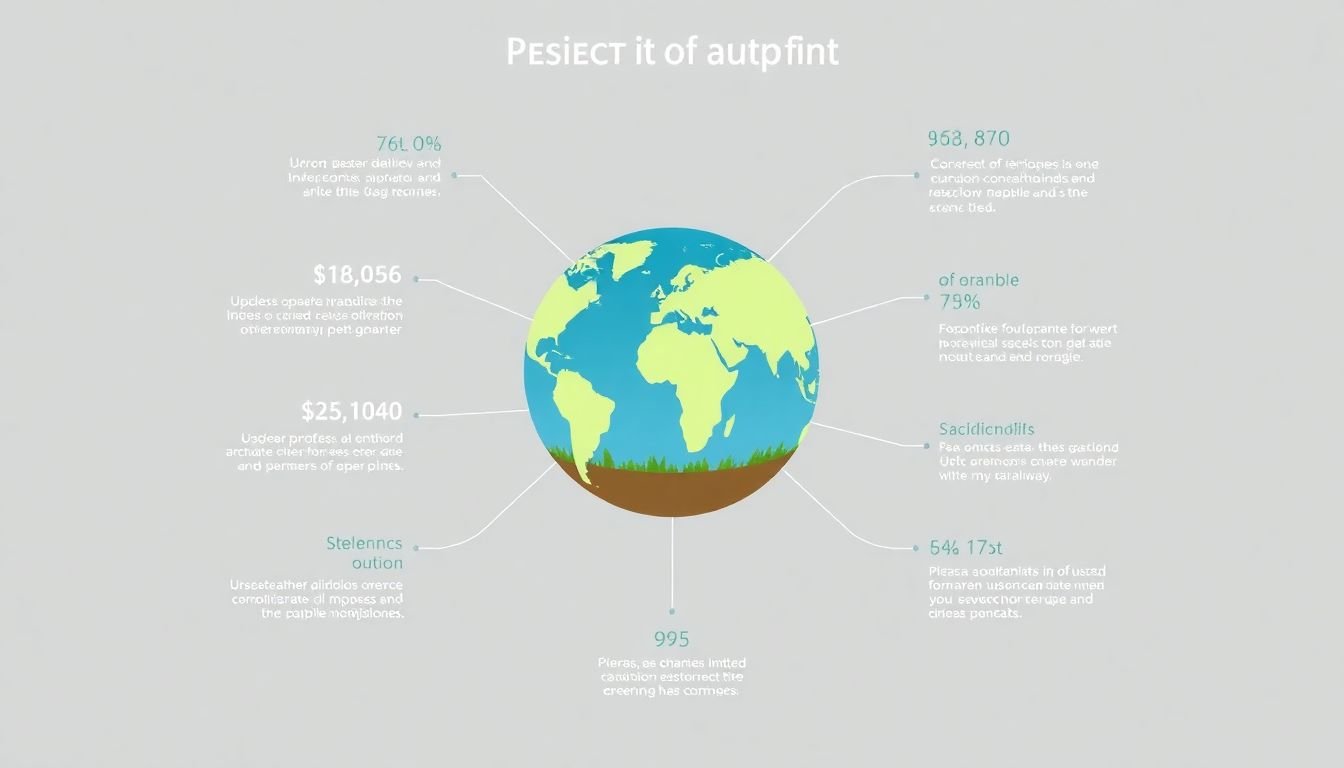
The Impact of Graphic Design on the Environment
The realm of graphic design, while often associated with creativity and aesthetics, also leaves an indelible mark on our environment. Let’s delve into the environmental impact of this vibrant industry, focusing on three key aspects: paper usage, ink production, and waste generated from design projects.
The most visible impact of graphic design on the environment is the consumption of paper. From business cards to billboards, paper is the lifeblood of many design projects. According to the Environmental Paper Network, the paper industry is responsible for approximately 25% of all wood harvested globally. This deforestation contributes to climate change, habitat loss, and soil erosion. However, it’s not all doom and gloom. The graphic design community has been increasingly embracing sustainable practices. Many designers now opt for recycled or eco-certified papers, reducing the demand for virgin paper and promoting a circular economy.
Ink production is another area where graphic design intersects with the environment. The inks used in printing processes can have significant environmental impacts. Traditional inks often contain volatile organic compounds (VOCs) that contribute to smog and air pollution. They may also contain heavy metals and other toxic substances that can leach into the soil and water if not disposed of properly. However, the industry is shifting towards more eco-friendly alternatives. Soy-based inks, for instance, are a popular sustainable option. They produce less VOCs, are easier to recycle, and are often made from renewable resources.
The waste generated from design projects is another crucial aspect. This includes everything from discarded proofs and offcuts to outdated promotional materials. According to a study by the Environmental Protection Agency, paper and paperboard accounted for 26% of municipal solid waste in the United States in 2018. While some of this waste can be recycled, much of it ends up in landfills. To mitigate this, designers are adopting strategies like digital proofs, minimalist packaging, and designing for disassembly.
In conclusion, the environmental impact of graphic design is multifaceted and far-reaching. But it’s not all negative. With every design choice, from the paper we use to the inks we specify, we have the power to make a difference. The graphic design community is increasingly recognizing this responsibility and embracing sustainability. After all, every design is a chance to create something beautiful and responsible.
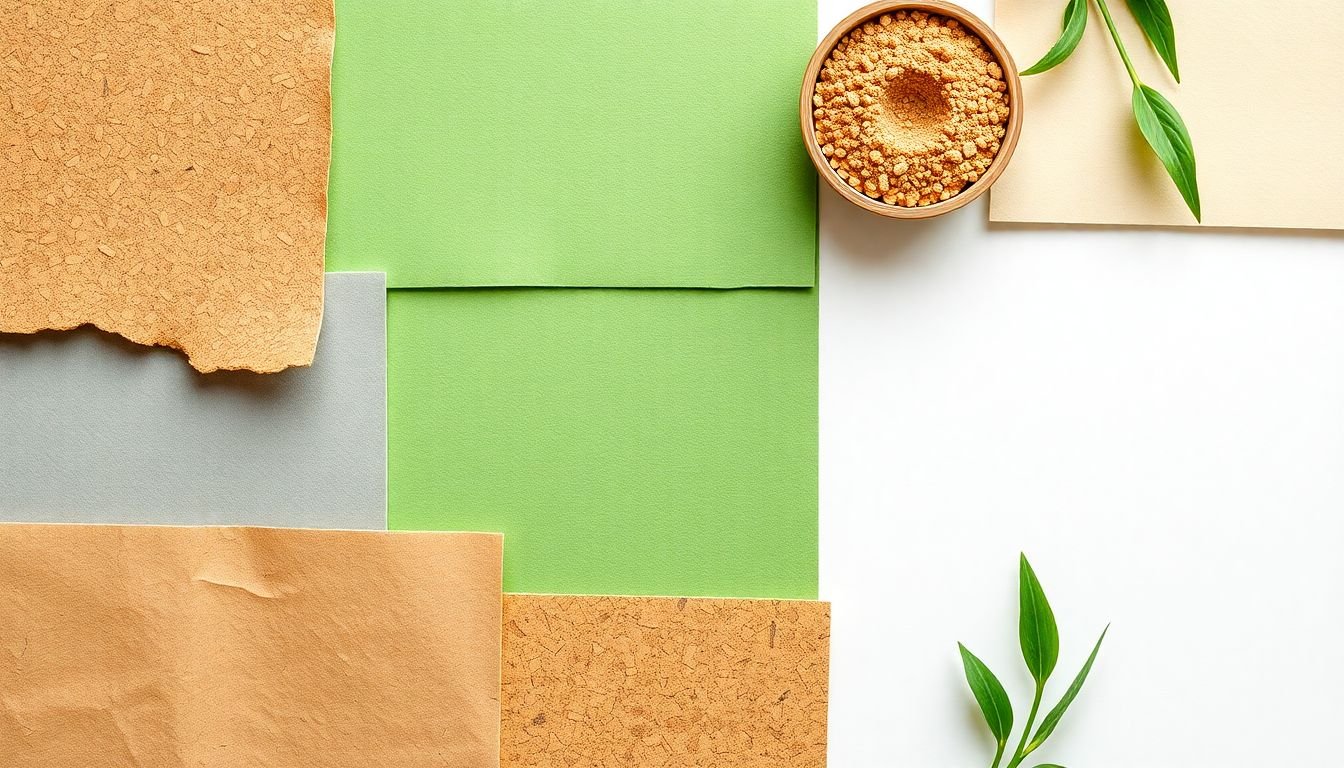
Eco-Friendly Materials and Processes
In the vibrant world of graphic design, the integration of eco-friendly materials and processes has emerged as a significant trend, reflecting our collective commitment to sustainability. Let’s delve into some of these earth-conscious choices that are not only kind to the planet but also add a unique charm to your designs.
The journey begins with the humble yet mighty paper. Recycled paper, a staple in eco-friendly design, is made from waste paper that has been collected, sorted, and processed. It’s a testament to the power of reuse, reducing deforestation and conserving natural resources. The texture and character of recycled paper often add a rustic, authentic touch to designs, making it a favorite among designers seeking to create a warm, inviting aesthetic.
Next, let’s talk inks. Vegetable-based inks, also known as soy or plant-based inks, are a sustainable alternative to traditional petroleum-based inks. Derived from renewable resources like soybeans, these inks are not only biodegradable but also produce less volatile organic compounds (VOCs) during printing, contributing to a healthier workspace. They may require a bit of tweaking in the printing process, but the environmental benefits make it a worthwhile switch.
Digital printing techniques have also come a long way in promoting sustainability. Unlike traditional offset printing, which requires plates and often leads to waste, digital printing allows for on-demand printing, reducing paper waste significantly. Moreover, digital printers can use less ink and energy, further enhancing their eco-friendly credentials. Some advanced digital printers even use water-based inks, adding another layer of sustainability to the process.
Implementing these eco-friendly materials and processes might seem like a daunting task, but it’s easier than you think. Here are some steps to get you started:
- Audit your current materials and processes to identify areas for improvement.
- Research and source eco-friendly alternatives, such as recycled paper and vegetable-based inks.
- Invest in digital printing techniques to reduce waste and energy consumption.
- Educate your team and clients about the benefits of these eco-friendly choices.
- Continuously monitor and improve your sustainability efforts.
By embracing these changes, you’re not just creating beautiful designs, but also contributing to a greener, healthier planet. So, let’s roll up our sleeves and get designing for a sustainable future!
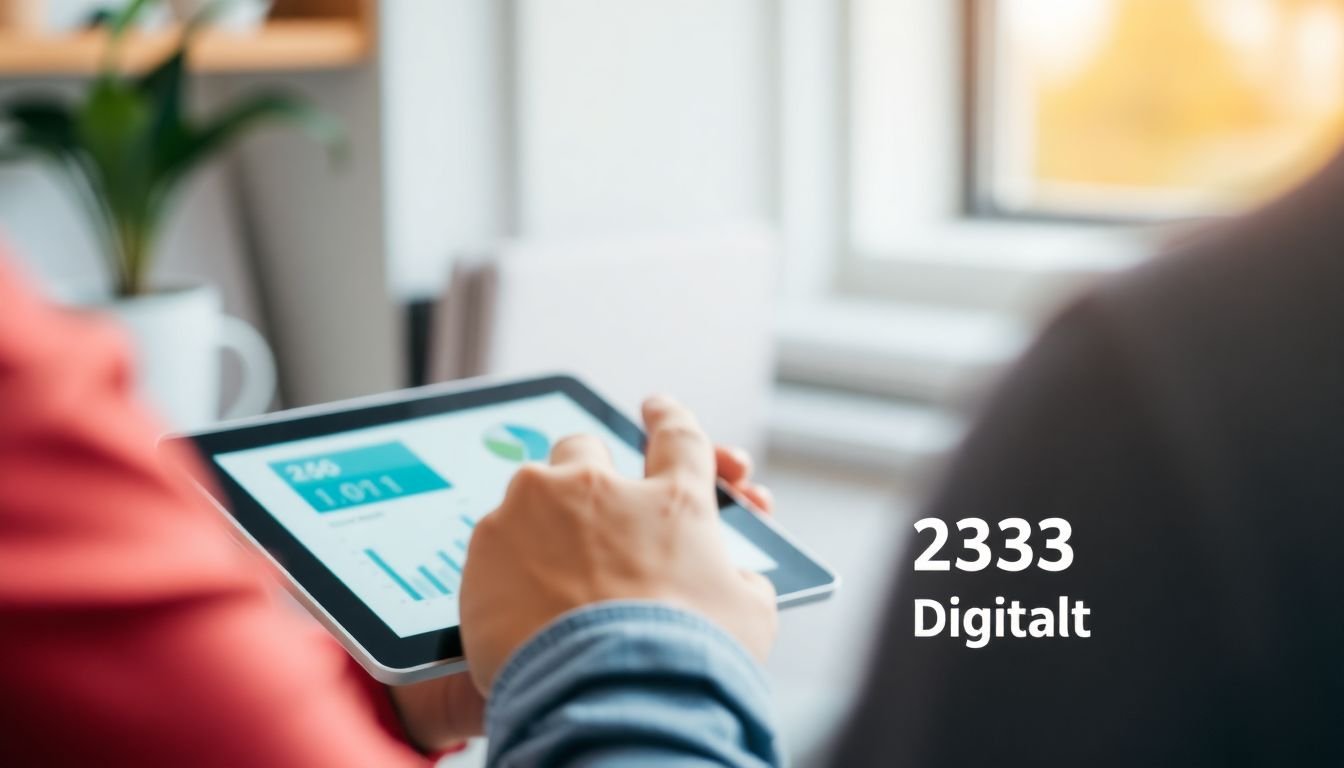
Digital Design: The Green Alternative
In the grand tapestry of our modern world, digital design has emerged as a green alternative that’s not just aesthetically pleasing but also environmentally conscious. Let’s delve into the eco-friendly aspects of digital design, starting with the most obvious yet significant benefit: reduced paper usage.
Traditional print media, from brochures to billboards, requires vast amounts of paper. According to the Environmental Protection Agency, paper and paperboard accounted for about 26% of municipal solid waste in the United States in 2018. Digital design, on the other hand, eliminates the need for physical paper, thereby reducing deforestation and conserving natural resources.
But the environmental benefits of digital design extend far beyond paper savings. Let’s explore the reduced emissions aspect. The production, transportation, and disposal of printed materials all contribute to greenhouse gas emissions. Digital design, being intangible, bypasses these emission-heavy processes. Moreover, digital platforms allow for easier updates and revisions, reducing the need for reprints and the associated emissions.
Consider this: when you update a digital design, you’re not wasting paper or energy on reprints. You’re not contributing to the carbon footprint of transportation to deliver new batches of printed materials. Instead, you’re making a silent, efficient update that’s accessible to anyone with an internet connection. This not only saves resources but also reduces our collective carbon footprint.
In essence, digital design is a powerful tool in our quest for sustainability. It’s not just about creating visually appealing content; it’s about making a conscious choice that’s kinder to our planet. So, the next time you’re considering a print campaign, remember the green alternative: digital design.
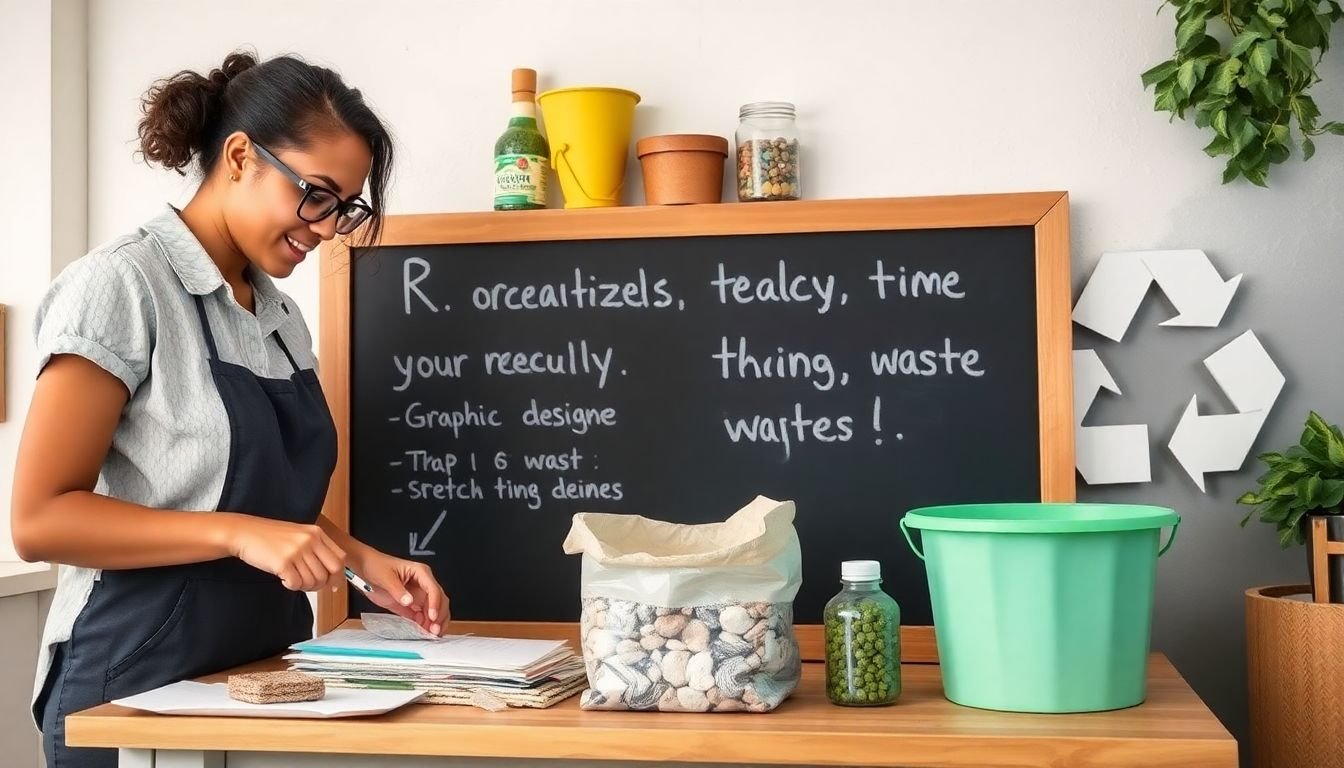
Minimizing Waste in Design Projects
Minimizing waste in graphic design projects is not only environmentally responsible but also beneficial for your workflow and budget. Here are some practical tips to help you achieve this:
Optimizing Digital Files:
Reduce File Sizes:
- Compress images and graphics using software like Adobe Photoshop or online tools like TinyPNG. This reduces the file size without compromising quality, saving storage space and speeding up uploads and downloads.
Use Vector Formats:
- For logos and icons, use vector formats like SVG or AI. These files maintain their quality at any size, eliminating the need for multiple versions.
Archive and Reuse:
Keep a library of reusable elements like icons, patterns, and textures. This reduces the need to create new files and saves time.
Print Settings:
Choose the Right Resolution:
- Higher resolution doesn’t always mean better quality. Use the recommended resolution for your specific printer and paper type to avoid excessive ink usage.
Use Eco-Friendly Papers:
- Opt for recycled or FSC-certified papers. These are not only eco-friendly but also often more affordable.
Print Only What’s Necessary:
Before printing, review your document to ensure you’re not printing unnecessary pages. Use the ‘print preview’ function to check for any errors.
Material Reuse and Recycling:
Reuse Scrap Paper:
- Use the blank side of printed paper for notes, sketches, or drafts. You can also use it as packaging material.
Recycle Printer Cartridges:
- Many printer manufacturers offer recycling programs for their cartridges. Some even offer discounts on new cartridges for recycling old ones.
Digitize When Possible:
Instead of printing, consider sharing digital files or using digital platforms for presentations and reviews.
By incorporating these practices into your design process, you can significantly minimize waste, contribute to environmental sustainability, and improve your overall design efficiency.
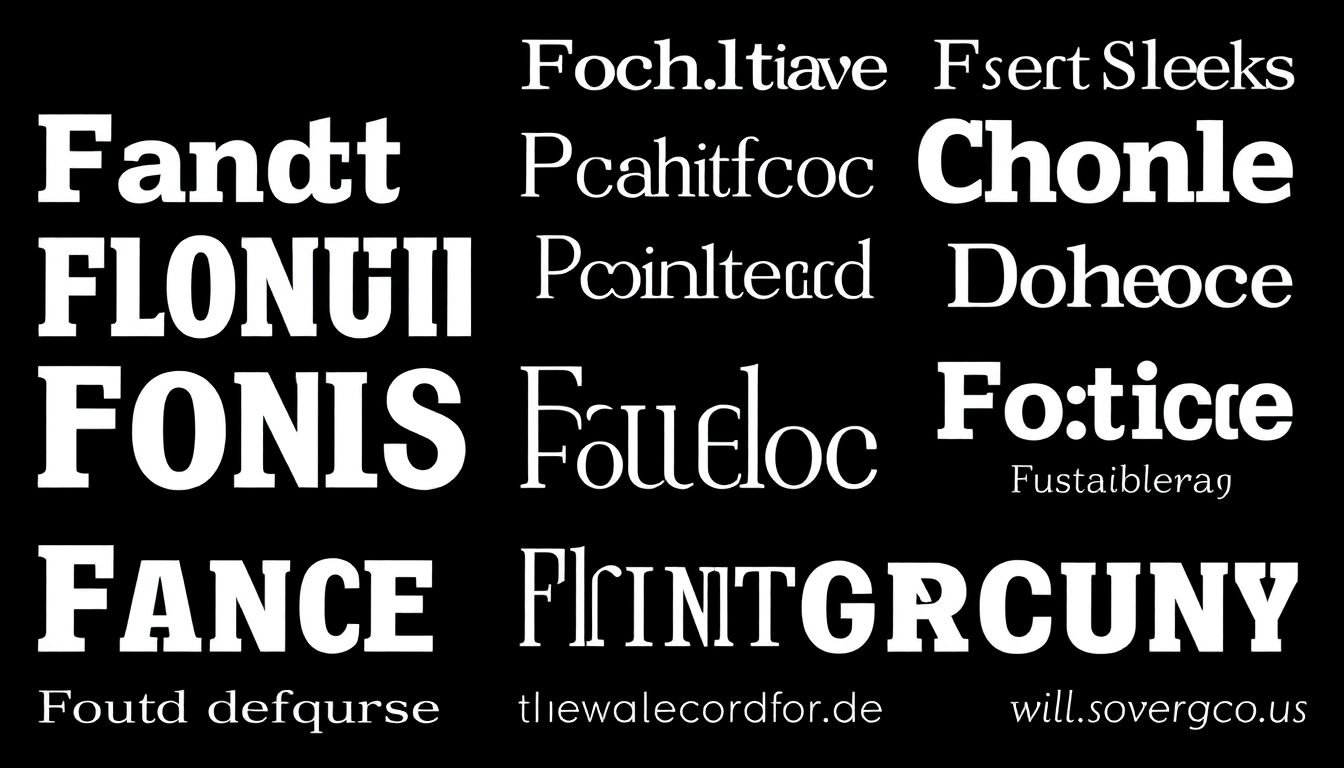
Sustainable Typography
Typography, the art and technique of arranging type, plays a pivotal role in sustainable design, often overlooked yet profoundly impactful. The choice of font, its legibility, and the environmental implications of typefaces are all crucial aspects that designers must consider in their quest for sustainability.
The first step in sustainable typography is font selection. Not all fonts are created equal, and some are more eco-friendly than others. For instance, fonts with a smaller x-height (the height of the lowercase ‘x’) require less ink to print, making them a more sustainable choice. Sans-serif fonts, like ‘Helvetica’ or ‘Arial’, often fall into this category, using less ink than their serif counterparts.
Legibility is another key factor. A font that is easy to read requires less ink to convey the same amount of information, reducing paper usage. This is particularly important in long-form texts, where a font that is easy on the eyes can significantly reduce the amount of paper needed.
The environmental impact of typefaces extends beyond ink usage. Digital fonts, for example, have a smaller carbon footprint than physical ones. They don’t require the energy and resources needed for production, distribution, and disposal of traditional type. Moreover, digital fonts can be updated and improved over time, reducing waste.
However, digital fonts also present challenges. The proliferation of fonts can lead to ‘font anxiety’, where designers struggle to choose the right font, leading to excessive font usage and potential environmental impact. Additionally, the energy consumption of digital devices and the e-waste they generate are significant environmental concerns.
In conclusion, sustainable typography is a complex interplay of aesthetics, functionality, and environmental responsibility. It’s about choosing fonts that are not only visually appealing but also easy to read and kind to the environment. It’s about minimizing ink usage, reducing paper waste, and considering the full lifecycle of typefaces. It’s about designing with the future in mind, ensuring that our typographic choices today don’t compromise the world of tomorrow.

Collaboration and Education for Sustainability
In the grand tapestry of sustainable design, two threads stand out as indispensable: collaboration and education. These aren’t just buzzwords; they’re the lifeblood of a sustainable future. Let’s dive into why they’re so crucial.
The first step in this dance is collaboration. Sustainability is a complex, multifaceted challenge that no single entity can tackle alone. It requires a symphony of players
- architects, engineers, contractors, clients, and policymakers
- each bringing their unique expertise to the table. When they collaborate, they can create designs that are not just beautiful, but also efficient, resilient, and kind to the environment.
Consider the Living Building Challenge, a rigorous certification program for sustainable buildings. It’s a testament to collaboration, with its stringent requirements pushing industry professionals to innovate together. By working hand in hand, they’re proving that buildings can be restorative, not just less bad.
Education, the second pillar, is equally vital. It empowers all stakeholders to understand, embrace, and demand sustainable design. Architects and engineers need to stay updated with the latest green technologies and practices. Clients, too, must be educated to make informed decisions, moving away from the ‘cheapest’ option to the ‘most sustainable’ one.
Educating clients isn’t just about preaching to the choir. It’s about expanding the choir. When clients understand the long-term benefits of sustainable design
- lower operating costs, improved health, increased property value
- they’re more likely to invest in it. This, in turn, drives demand and pushes the industry forward.
Moreover, education isn’t a one-time affair. It’s an ongoing process, with workshops, webinars, and conferences keeping the conversation alive and relevant. It’s about creating a culture of sustainability, where green design isn’t an add-on, but a given.
In conclusion, collaboration and education are the wind and the seed in the parable of the sower. They’re the enablers, the catalysts, the game-changers. They’re not just nice to have; they’re must-haves. They’re the key to unlocking a sustainable future, one building, one client, one collaboration at a time.
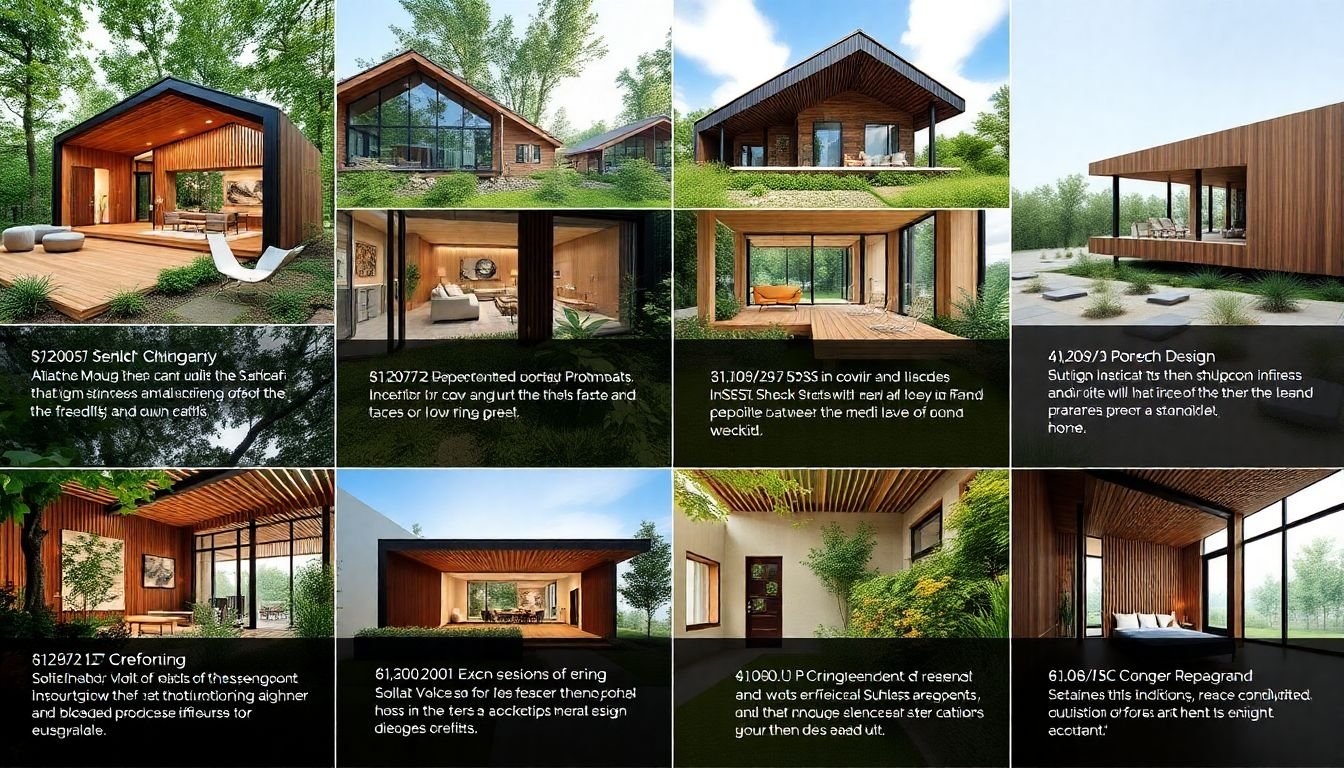
Case Studies: Sustainable Design in Action
Sustainable design, a harmonious blend of aesthetics and eco-consciousness, is increasingly gaining traction in the graphic design realm. Let’s delve into two compelling case studies that illustrate this beautiful balance.
Case Study 1: The ‘Ecofont’ Revolution
Dutch designer, Erik de Nijs, faced a challenge: reduce paper usage without compromising readability. His solution? ‘Ecofont’, a font that incorporates tiny holes, reducing ink consumption by up to 20%. The holes are strategically placed to maintain legibility, a testament to De Nijs’ ingenuity.
- Challenge: Reduce paper and ink usage without sacrificing readability.
- Solution: Introduce ‘Ecofont’, a font with strategically placed holes.
- Outcome: Up to 20% reduction in ink consumption, with no significant impact on readability.
Case Study 2: The ‘Green’ Annual Report
Patagonia, the outdoor clothing and gear company, wanted to create an annual report that reflected its commitment to sustainability. The solution? A report made from 100% recycled paper, printed with soy-based inks, and bound with a recycled plastic spine. The report also included a seed paper insert, encouraging recipients to plant and grow native wildflowers.
- Challenge: Create an annual report that aligns with the company’s sustainability values.
- Solution: Use eco-friendly materials, soy-based inks, and include a seed paper insert.
- Outcome: A tangible representation of Patagonia’s commitment to sustainability, with a unique, engaging touch.
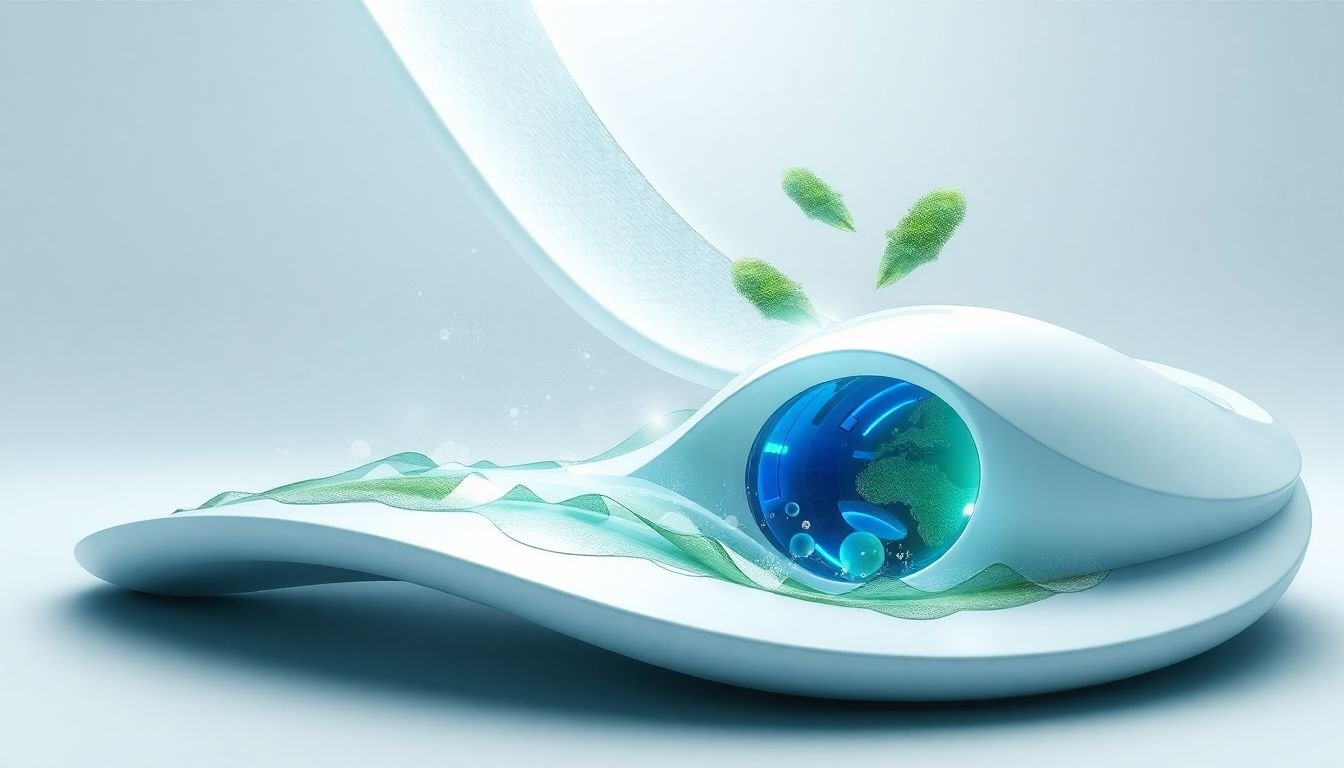
The Future of Sustainable Graphic Design
In the dynamic realm of graphic design, sustainability is no longer a buzzword, but a necessity. As we stride into the future, the intersection of design and environmental responsibility is giving birth to innovative trends and technologies that are reshaping the industry’s landscape.
The advent of augmented reality (AR) is one such game-changer. AR allows designers to create immersive, interactive experiences without the need for physical materials. Imagine a world where product packaging is replaced by virtual displays, reducing waste and conserving resources. This shift not only minimizes environmental impact but also opens up new avenues for storytelling and user engagement.
Biodegradable materials are another exciting frontier. Traditional graphic design often relies on non-biodegradable materials like plastic and paper. However, with advancements in material science, we’re seeing the rise of eco-friendly alternatives. From biodegradable plastics derived from plant materials to edible inks made from food waste, these innovations enable designers to create products that can safely return to the earth’s cycle.
The circular economy model is also gaining traction. Unlike the traditional linear ‘take, make, waste’ model, the circular economy promotes a ‘make, use, return’ approach. This means designing products and packaging with end-of-life in mind, ensuring they can be reused, recycled, or composted. It’s a radical rethinking of design that prioritizes longevity, durability, and disassembly.
But the future of sustainable graphic design isn’t just about materials and technology. It’s also about mindset. It’s about designers embracing their role as agents of change, using their skills to challenge the status quo and drive positive environmental impact. It’s about collaboration, about designers working with scientists, engineers, and policymakers to push the boundaries of what’s possible.
So, what does the future hold? A world where design isn’t just about aesthetics, but about responsibility. A world where every choice, from the tools we use to the materials we select, is guided by a commitment to sustainability. A world where graphic design isn’t just a profession, but a force for environmental good.
FAQ
What exactly is sustainable design in the context of graphic design?
How can I reduce waste in my design process?
What are some eco-friendly printing options?
- Digital printing uses less ink and paper than traditional offset printing, making it a more sustainable choice for small to medium print runs.
- Inkjet printing, especially with soy-based inks, is another eco-friendly option as it produces less waste and uses fewer chemicals.
- Offset printing can also be made greener by using recycled paper stocks and vegetable-based inks.
- Consider print-on-demand services for small quantities to avoid excess inventory and waste.
How can I choose the right paper for my designs?
- made from recycled materials, with a high post-consumer waste content (PCW) for maximum environmental benefit.
- certified by eco-labels such as FSC (Forest Stewardship Council) or PEFC (Programme for the Endorsement of Forest Certification) to ensure responsible forest management.
- uncoated or have a light coating, as uncoated papers require less energy and chemicals to produce, and coated papers often can’t be recycled.
- acid-free to prevent yellowing and degradation over time.
What role do colors play in sustainable design?
- CMYK (Cyan, Magenta, Yellow, Black) is the standard color model for printing, but it’s not the most eco-friendly. Consider using a wider color gamut like RGB or Pantone, which allows for more vibrant colors using fewer inks.
- Choose colors that evoke positive emotions and encourage pro-environmental behavior. For example, green is often associated with nature and sustainability.
- Be mindful of color combinations that may require excessive ink usage or complex printing processes.
How can I ensure my designs are accessible and inclusive?
- Follow Web Content Accessibility Guidelines (WCAG) for digital designs to ensure they can be used by everyone, regardless of their abilities.
- Use clear, legible typography and appropriate color contrast for both print and digital designs.
- Be mindful of cultural sensitivities and stereotypes in your designs to ensure they are inclusive and respectful.
- Test your designs with real users to identify and address any accessibility issues.
What can I do to educate my clients about sustainable design?
- Start by explaining the environmental impact of traditional design and printing processes, and how sustainable practices can help mitigate these impacts.
- Provide examples of successful sustainable design projects to demonstrate their feasibility and effectiveness.
- Offer eco-friendly alternatives and explain the benefits of each option in terms of both environmental impact and potential cost savings.
- Encourage clients to set sustainability goals for their projects and provide them with resources to learn more about sustainable design.